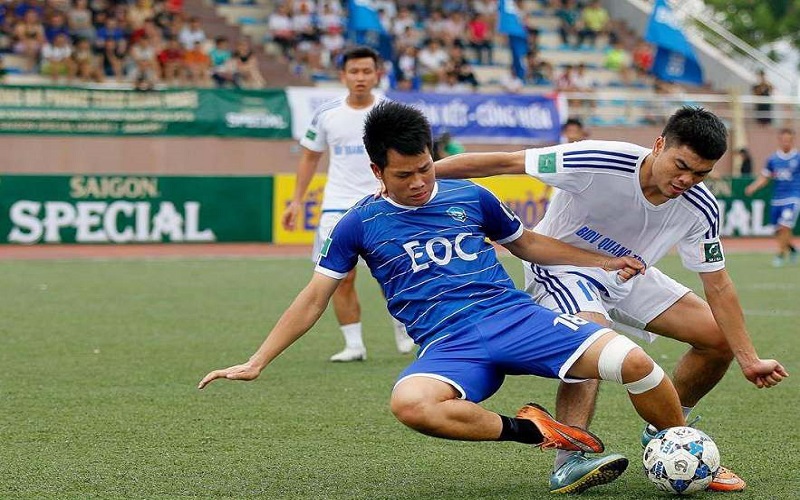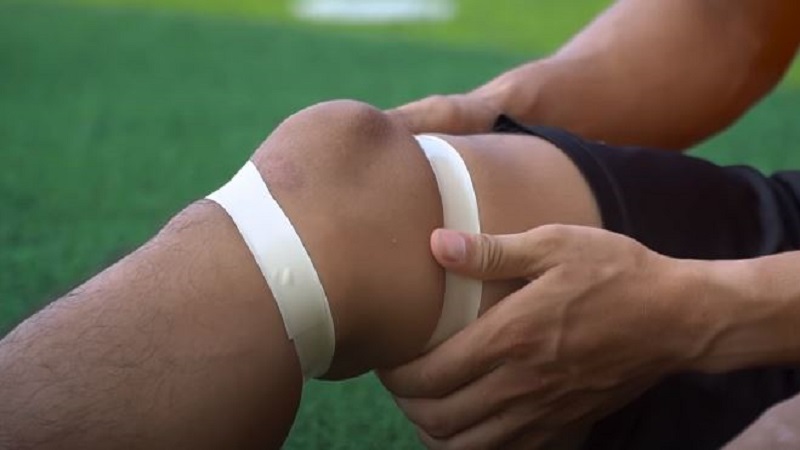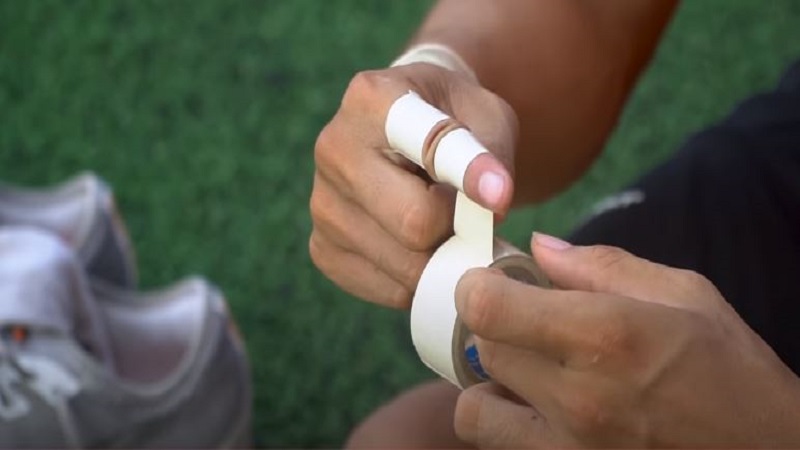Sports tape is an essential tool for athletes, used to protect vulnerable areas such as ankles and wrists from injuries and to reduce the risk of injury during training. Let’s explore the benefits and proper use of sports tape in this article.
1 Benefits of Sports Tape
Sports tape is a specialized type of adhesive tape designed for athletes and sports players who are prone to sprains, joint pain, and other injuries during intense physical activities. As such, the benefits of sports tape include:
Injury Prevention and Muscle Support
Participating in high-impact sports like football comes with a high risk of joint injuries, especially to the knees and ankles, regardless of skill level. Sports tape helps support muscles during training, protect nerves, and promote muscle development.
 Sports tape helps prevent injuries
Sports tape helps prevent injuries
Its primary function is to protect against and reduce the severity of injuries, provide muscle support, and prevent muscle strains during intense training sessions or competitions.
Preventing Further Injury
In situations where a player has a pre-existing injury that is not fully healed, or sustains an injury during a game and must continue playing, sports tape can be invaluable.
 Sports tape helps prevent further injury
Sports tape helps prevent further injury
By taping the affected area, such as the knee, ankle, or wrist, the player can stabilize the joint and reduce the risk of further damage to ligaments and tendons.
2 How to Use Sports Tape
It is advisable for athletes to carry a roll of sports tape with them to games or training sessions to immediately address any potential injuries. If you start feeling discomfort or pain in your muscles or joints, stop the activity and apply the tape as follows:
- First, clean and dry the area where you will apply the tape.
- Gently wrap the tape around the injured area, being careful not to create creases in the tape.
 The amount of tape used will depend on the injured area
The amount of tape used will depend on the injured area
The amount of tape used and the technique for applying it will vary depending on the affected body part. For example, taping around the knee, wrist, or under the fingers will require different amounts of tape—taping a knee might use up to ⅓ of a roll, while a skilled taper may only need ½ or ⅔ of a roll.
Important Considerations When Using Sports Tape
- Avoid wrapping the tape too tightly or too loosely.
- If you have sensitive skin, perform a patch test by applying a small piece of tape for at least 24 hours to ensure you don’t experience an allergic reaction.
- Do not apply sports tape to open wounds. If you experience irritation, remove the tape immediately.
- Always choose high-quality, reputable sports tape products.
In conclusion, understanding the benefits and proper use of sports tape can help athletes protect themselves from injuries and perform at their best. We hope this article has provided valuable insights for all sports enthusiasts out there.






























